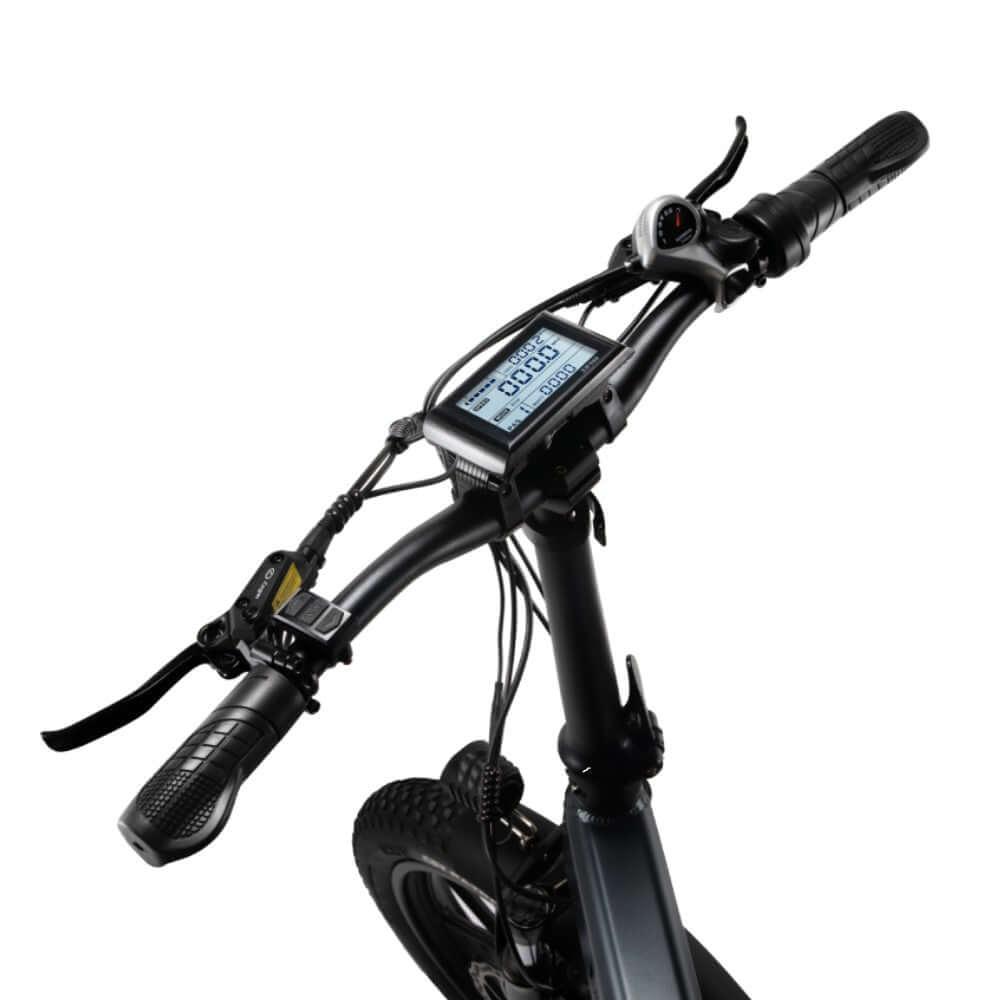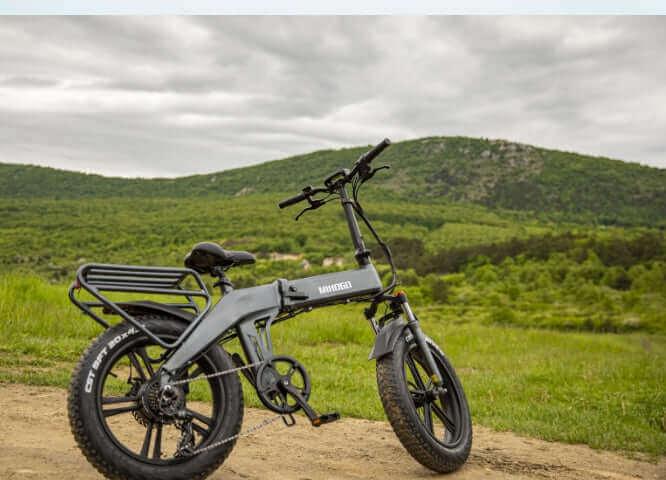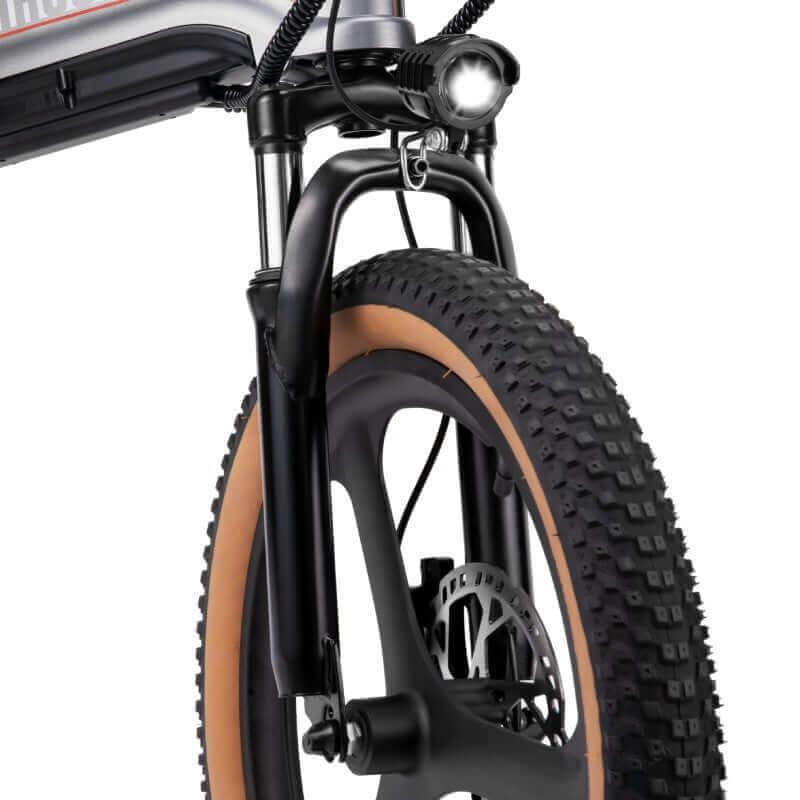1. Getting Started: Unboxing Your Electric Bike
1.1 Charge the Battery
Before you can hit the road on your new electric bike, the first thing you need to do is charge the battery. E-bike batteries are usually shipped with about 60% charge. To maximize your riding experience, it's highly recommended to fully charge the battery before taking it out for a spin.
1.2 Set Up the Handlebar
Your e-bike will be shipped with the handlebar turned for easier packaging. To set it up, simply use the provided Allen key and follow the instructions included with your bike. This should only take a few seconds.
1.3 Install the Pedals
Attaching the pedals is a breeze. Your bike should come with the necessary tools and instructions. If you need additional guidance, check out this video tutorial on pedal installation.
2. Pre-Ride Checklist: Ensuring a Safe Ride
2.1 Check Tire Pressures
Before each ride, it's crucial to check your tire pressures. They should be between the MIN and MAX values indicated on the tire sidewall.
2.2 Inspect Brakes
Make sure your rim brake pads have visible channels to allow water to escape; otherwise, they need to be replaced. For disc brake pads, check that there's at least 1mm of friction material remaining before they need replacement.
2.3 Verify Battery Security and Charge
Ensure the battery is properly secured to the frame and check the charge level indicator to make sure you have enough power for your intended ride.
2.4 Assess Chain Condition
To keep your e-bike running smoothly, maintain a clean and well-oiled chain. If you notice surface rust, clean and lubricate the chain before riding.
2.5 Examine Bolts
Take a moment to inspect the bolts on your handlebars, stem, brakes, crank arms, pedals, shifters, and levers. If you spend long hours riding, be mindful of bolts that might loosen due to vibration.
3. Battery Care: Tips for Prolonged Battery Life
3.1 Charging Practices
Caring for your e-bike battery is simple. Most e-bikes use Lithium-based batteries, similar to those in mobile phones and laptops. There's no need to discharge the battery completely before recharging. Feel free to plug in your e-bike battery and top it up whenever necessary.
3.2 Overnight Charging
It's perfectly safe to leave your e-bike battery charging overnight. Renowned e-bike component brands use batteries with sophisticated Battery Management Systems (BMS) that prevent overcharging or over-draining.
3.3 Battery Storage
If you plan to store your e-bike for an extended period (e.g., during winter), it's recommended to leave the battery charged to around 60% or half-full. Check the on-board battery charge indicator to determine the current charge level.
3.4 Battery Lifespan
E-bike batteries are typically warrantied for up to two years. However, they can last longer depending on usage. Generally, an e-bike battery should last up to 500 charge cycles or around 2-4 years.
3.5 Charging via Cigarette Lighter
You can charge your e-bike from a cigarette lighter using an inverter. Ensure the output voltage of your inverter is compatible with your e-bike charger. Don't forget to keep your engine running to avoid draining your car battery.
4. Cleaning Your Electric Bike
4.1 General Cleaning Tips
Cleaning your electric bike is similar to cleaning a regular bike. Avoid using high-pressure washers up close, as this can force water into delicate areas. Opt for cleaning agents specifically designed for bicycle paintwork, such as Muc-Off or Green Oil.
4.2 Battery Cleaning
While cleaning your e-bike, you can also clean the battery. Be cautious not to submerge it in water or use a pressure washer on it. Gently clean the electrical contacts on the battery and frame with a soft cloth. For added protection, apply a thin layer of grease to the contacts if you frequently ride in wet, salty, or wintery conditions.
4.3 Motor Cleaning and Lubrication
E-bike motors are typically designed to last as long as the bike and are sealed to prevent user servicing. Therefore, you don't need to worry about cleaning or lubricating the motor.
4.4 Lubrication Requirements
No special oils are required for your e-bike. You can use the same wet and dry chain lubricating oils as on a regular bike. Keep in mind that wet lube works best in wet weather, while dry lube repels dust and dirt in dry conditions.
5. Riding Your E-Bike: Best Practices for Battery Care
5.1 Temperature Considerations
Riding your e-bike in extremely hot or cold conditions regularly can affect battery efficiency, leading to reduced range and potential battery damage. Ideally, operate your e-bike within the recommended temperature range of -10℃ to 40℃.
5.2 Turbo Mode Usage
While you can leave your e-bike in turbo mode all the time, doing so will decrease your range and potentially shorten battery life due to increased energy demand.
5.3 Integrated Lights
Should your e-bike battery run low, the BMS will continue to power integrated lights, allowing you to safely get home at night.
6. Buying an Electric Bike
If you're considering purchasing an electric bike, check out our e-bike buying guide for everything you need to know.
By following these electric bike maintenance guidelines, you'll ensure a safe and enjoyable riding experience while prolonging the life of your e-bike. Remember to perform regular check-ups and keep your e-bike clean and well-maintained to maximize its potential. Happy riding!








